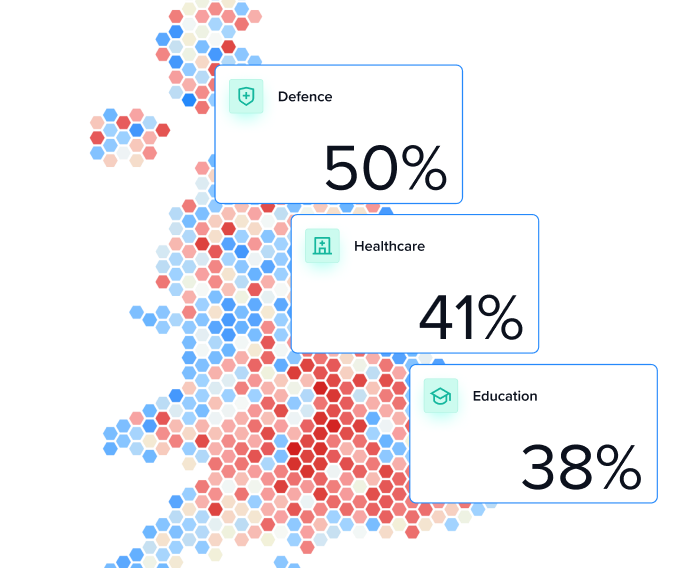Blog/Polling
Focaldata / Hope Not Hate UK general election MRP
Contained in this post are the results of our first public MRP poll for the next UK general election, commissioned by Hope Not Hate. With fieldwork conducted between 30 November 2024 and 5 January 2025, Focaldata surveyed 17,790 voters across Great Britain.
You can see the full results below, or read on for methodological information.
Data tables
Results for all constituencies are available here.
Methodological note
Following the 2024 UK general election, and the release of Scottish 2022 Census data, a new post-stratification frame was built incorporating interlocking cells for Westminster constituency, age, education, ethnicity, gender and past vote history.
We estimate a mutli-level regression model where individual respondents are nested within constituencies, which in turn are nested within regions. We include individual-level characteristics such as age and past vote as random effects. We also include numerous fixed effects such as constituency-level party vote share or constituency population density.
We use a turnout model trained on validated turnout data from the British Election Study. This means that the model is trained on data which knows whether someone has voted, rather than simply relying on their self-reported turnout.
Our MRP results also undergo a method called 'unwinding' or 'regradienting', which accounts for the inherent tendency of MRP models to flatten party vote shares across constituencies, and therefore miss the overall slope or gradient of results for each party. We used an unwinding method at the last general election to more accurately predict results; firms which did not employ any unwinding often missed the number of Conservative seats in 2024 by some distance. Prior to the last general election, we also designed an alternative unwinding methodology which had more basis in the underlying data, but was not publicly released. This alternative method would have given us the most accurate result in the industry, and is now being debuted publicly for the first time.
A degree of caution should be exercised when interpreting the results of 'other' parties in individual constituencies. The unwinding process is designed to more accurately assess how smaller parties will fare in their best seats, but can cause extremely small vote shares at the other end of the spectrum if the overall vote share for other parties is low.
Model variables
We provide estimates of each party vote share in each constituency. We do not model "Would not vote", "Don't know" or "Prefer not to say"Following the 2024 UK general election, and the release of Scottish 2022 Census data, Focaldata has built a new poststratification incorporating interlocking cells for Westminster Constituency, age, education, ethnicity, gender and past vote history.We estimate a mutli-level regression model where individual respondents are nested within constituencies, which in turn are nested within regions. We include individual-level characteristics such as age and past vote as random effects. We also include numerous fixed effects such as constituency-level party vote share or constituency population density.We incorporate a turnout model trained on validated turnout data from the British Election Study. This means that the model is trained on data which knows that someone has voted, not just said they would vote.
For questions on these results, please contact Matt Chennells (matt@focaldata.com)
The above information is shown in accordance with rules from the British Polling Council (see https://www.britishpollingcouncil.org/objects-and-rules/)


